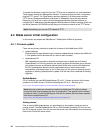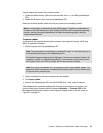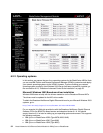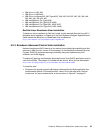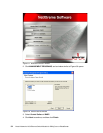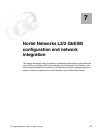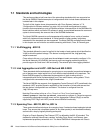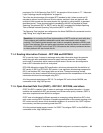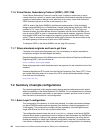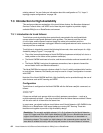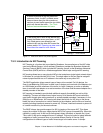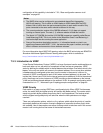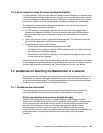58 Nortel Networks L2/3 Ethernet Switch Module for IBM Eserver BladeCenter
7.1 Standards and technologies
This section provides a brief overview of the networking standards which are supported on
the Nortel GbESM. Detailed examples of configurations which include these standards are
included later in this chapter.
The bulk of this chapter shows interconnection with Cisco Systems’ devices. In 7.9,
“Configuration for Extreme switches” on page 143, we include configurations for some
functions that were tested on a pair of Extreme switches. Interconnection of the GbESMs with
Nortel switches which run Alteon OS software is easily accomplished because the command
syntax is almost exactly the same as that of the GbESMs themselves.
The Nortel GbESM connects to and interoperates with products from a variety of vendors
which fully implement these standards. A limited number of other vendors’ proprietary
extensions to the standards are also supported. The Nortel GbESM configurations provided
in this chapter are not limited to use when connecting with Nortel, Cisco, or Extreme gear.
7.1.1 VLAN tagging - 802.1Q
This standard defines the use of a tag field in the header of each packet which identifies the
VLAN to which the packet belongs. This feature is configured with the /cfg/port/tag
ena|dis command.
Cisco refers to this as a
trunk and uses the switchport trunk command to configure it. On
the Nortel Networks L2/3 GbESM, the internal ports have tagging enabled by default to
provide support for Serial over LAN functionality. The external ports have tagging disabled.
7.1.2 Link Aggregation and LACP - 802.3ad and 802.3-2002
These standards define techniques for grouping two or more parallel connections between a
pair of devices as a single logical link or trunk
with the total bandwidth of its members. The
Nortel GbESM supports a prestandard implementation of static trunking
which is
interoperable with similar implementations from Cisco and Extreme, among others. This is
configured with commands on the /cfg/l2/trunk menu.
The Nortel GbESM also supports Link Aggregation Control Protocol (LACP) as defined in the
standards. LACP provides dynamic negotiation of the formation of trunks and ensures that
the two devices’ configurations are consistent. This feature is configured from the
/cfg/l2/lacp menu.
Note that Cisco refers to this as a
Port Channel or EtherChannel and uses the
channel-group
and interface portchannel commands to configure it. Cisco also supports
a proprietary prestandard protocol known as Port Aggregation Protocol (PAgP) as well as
supporting LACP. PAgP and LACP provide almost identical functionality.
7.1.3 Spanning Tree - 802.1D, 802.1w, 802.1s
These protocols define techniques for managing Layer 2 networks whose topologies include
loops. They ensure that a broadcast packet (or any other packet) is not forwarded endlessly
around such a loop by logically blocking some ports.
Original or Classic Spanning Tree Protocol (STP) is defined by the 802.1D standard. This
standard is relatively old and many vendors, including Cisco, Nortel, and Extreme, have
implemented proprietary extensions to it. The Nortel GbESM will interoperate with Cisco’s



